Doctrine and Covenants Section 28 (Book of Commandments (BC) 30 (cf. LDS D&C 28; Community of Christ (CC) D&C 27))
Date: September 1830
Place: Fayette, Seneca County, New York
Historical Note: No longer enjoying the protection of Isaac Hale, and concerned about their personal safety, Joseph and his family determined to leave Harmony, Pennsylvania permanently. Having learned of the persecution against Joseph Smith in Harmony, Peter Whitmer, Sr., invited Joseph and Emma to come and live with his family in Fayette. About the last of August 1830 Newel Knight took his team and wagon to Harmony to move Joseph and Emma (one source says, “and their family”, but I have no idea of whom they are speaking. Alvin died in 1828 and Thaddeus wasn’t born until 1831) to Fayette. They arrived about 1 September 1830.
Shortly after arriving in Fayette, the Prophet became greatly distressed over Hiram Page’s claim to certain revelations, which came by means of a seer stone. Newel Knight described the following in his journal:
“[Page] had managed to get up some discussions of feeling among the brethren by giving revelations concerning the government of the Church and other matters, which he claimed to have received through the medium of a stone he possessed…Even Oliver Cowdery and the Whitmer family had given heed to them..Joseph was perplexed and scarcely knew how to meet this new exigency. That night I occupied the same room that he did and the greater part of the night was spent in prayer and supplication. After much labor with these brethren they were convinced of their error and confessed the same, renouncing [Page’s] revelations as not being of God.”
He also recorded:
“[Hiram] had quite a roll of papers full of these revelations, and many in the Church were led astray by them.”
Section 28, received prior to the second conference of the Church (26 September 1830), came in response to the Hiram Page difficulty. Among other matters, this revelation called Oliver Cowdery to take a mission to the American Indians, and clearly implied that the New Jerusalem would be located “on the borders by the Lamanites” (i.e. Missouri).
A few years ago I read a book edited by Newell Bringhurst and Lavina Fielding Anderson entitled, Excavating Mormon Pasts: The New Historiography of the Last Half Century. In this collection was an essay written by Danny L. Jorgenson entitled, Studies of Mormon Fissiparousness: Conflict, Dissent, and Schism in the Early Church. It is the essay I remember the most. Read the following quotes from Jorgenson’s essay and think of how they pertain to the Hiram Page incident:
“…Higher probabilities of schism are predicted as organizational size and diversity increase, while lower probabilities are anticipated as authority becomes more centralized…”
“…Although charisma is uniquely suited for legitimating religious innovations, it does not contribute to social cohesion. By definition, it is individualistic; almost anyone can claim the gift of prophecy; and it strongly resists refutation. Because charisma has a strong democratic impulse, this form of authority is easily dispersed; it is insufficient for legitimating organizational structure; and any collectivity founded on it is very susceptible to fragmentation. If an organization is to acquire stability and durability, charisma must be constrained…”
“…If truth is absolute, then not all claims are equal, and there must be a way of deciding among them…”
As I see it, Hiram Page, working within the very democratic model of revelation (a charismatic gift), starts receiving revelations. This could only lead to
fissiparousness. Joseph then receives a revelation stating that he [Joseph] is the only one “who shall be appointed to receive commandments and revelations in this church…” By receiving this revelation, charisma was constrained, it showed that not all truth claims are equal, authority becomes more centralized, and the organization becomes stabilized and durable.
I have heard it said, but been unable to confirm, that one of the things that led to the Whitmer family’s disenchantment with Joseph was that he used his seer stone less and less for receiving revelation. It makes sense within the context of section 28, but as of yet I have been unable to confirm this with any reliable first-hand or second-hand documentation. If anyone has any isight on this, I would welcome it.
Of section 28 and the conference that soon followed, Richard Bushman says:
“In that moment, the fledgling movement was put on a course to becoming a church rather than remaining a visionary sect” (Bushman, pg. 122).
I am reading the first volume of Brian Hales’ Joseph Smith’s Polygamy. Let me give an interesting quote as it pertains to missionary calls to the “Lamanites”. In a letter to Brigham Young, W.W. Phelps recited the “substance” of a revelation supposedly received on Sunday morning, July 17, 1831. The revelation does raise questions as W.W. Phelps gives a bit too much detail if he is just reciting the “substance” of the revelaion.:
“…For it is my will, that in time, ye should take unto you wives of the Lamanites and Nephites…”
Phelps concluded the letter to President Young:
“…I asked brother Joseph privately, how “we,” that were mentioned in the revelation could take wives from the “natives” – as we were all married men? He replied instantly “In the same manner that Abraham took Hagar and Katurah[Keturah]….”
This may have been the first indications that the idea of polygamy had entered Joseph’s mind. The problem is that these quotes come from a letter from Phelps to B. Young dated August 12, 1861 (30 years after the conversation/revelation referred to). To me it has almost an apologetic tone to it as if Phelps is trying to show that Joseph had been teaching the principle of polygamy for a while.
Regarding the Lamanite Mission:
Because of the Indian Removal Act passed in May 1830, the new territory for relocating American Indians was to be in present-day Kansas and Oklahoma. Thus, these missionaries to the Lamanites planned to go west from Independence, Missouri into Indian Territory.
Later, calls were given to Peter Whitmer, Jr., Parley P. Pratt, and Ziba Peterson. The missionaries traveled to the Cattaraugus tribe near Buffalo, New York, through the state of Ohio, to the Delaware Nation in the territory west of Missouri. But, lacking credentials, they were reduced to preaching to the white population in Jackson and Lafayette counties, Missouri. In essence, the mission failed – the Church of Christ was not “established” among the Native Americans. So in the 1835 D&C the words “inasmuch as they receive thy teachings, thou shalt” were inserted to explain the failure.
It is important to give some of the known details of this adventure. The revelation for Oliver stated: “it is not revealed, and no man knoweth where the city [New Jerusalem] shall be built, but it shall be given hereafter. Behold I say unto you, that it shall be on the borders by the Lamanites.” There is a question as to whether “borders by the” was an addition to the text, since it was published as “among” in the Ohio Star in December 1831. Except for this instance, other New York revelations used the word “among.”
While there were Native Americans living in New York, the four elders “were appointed to go into the wilderness through the western States, and to the Indian Territory.” The western states were those west of New York, including Ohio, Indiana, Illinois, and Missouri. The Indian country, where some of the woodland tribes had been relocated west of the Missouri River, was at that time unorganized.
Parley Pratt said that in October of 1830 they called on the Catteragus Indians and left two copies of the Book of Mormon. Later they called upon the Wyandot Indians of Sandusky, Ohio, the Delaware Tribe, and the Shawnee. Lacking a government license, Cowdery and others were ordered off the Delaware and Shawnee reservations by Indian agent Richard Cummins. They were told they could obtain a permit from General William Clark, who was in charge of Indian affairs in St. Louis. Pratt, Cummins, and Cowdery would later write letters to Clark. It appears, although I am not 100% sure, that General Clark never replied to the letters.
In 1831, Oliver and Peter Whitmer, Jr. stated that the teachings were received with gladness; there was no mention of baptisms.
They also stopped in Mentor, Ohio to call on Pratt’s “former friend and instructor, Sidney Rigdon, in the Reformed Baptists Society.” They presented him with a copy of the Book of Mormon, which he promised to read, and then taught the restored gospel in many homes in the area. The consequence of this was that “at length Mr. Rigdon and many others … came forward and were baptized by us, and received the gift of the Holy Ghost by laying on of hands.” Pratt tells how “the news of the discovery of the Book of Mormon and the marvelous events connected with it” created a general “interest and excitement … in Kirtland, and in all the region round about. The people thronged us night and day, insomuch that we had no time for rest and retirement. Meetings were convened in different neighborhoods, and multitudes came together soliciting our attendance. … In two or three weeks from arrival in the neighborhood with the news, we had baptized one hundred and twenty-seven souls.” Among those they introduced to the gospel there were Isaac Morley, John Murdock, Lyman Wight, and Edward Partridge.
This unanticipated success in Kirtland had enormous consequences for the future of the Church. Kirtland soon became an important early gathering place for Church members and would later be the site of the Church’s first temple. The crop of Kirtland converts also yielded many early church leaders. Conspicuous among these, of course, was Rigdon himself, who would later serve as a counselor to Joseph Smith.
One new convert from the Kirtland area, Frederick G. Williams, joined the four missionaries on their journey. While their primary purpose was to preach to the native tribes, Cowdery and his fellow missionaries continued to teach others they met along the way. Among these early encounters was a meeting with the Shaker Community at North Union, Ohio. They left with the Shakers several copies of the Book of Mormon, though this approach apparently met with little success: Shaker Richard McNemar read one of those books and noted, “Whatever benefit the Indians may derive from this book of Mormon, certain it is we can derive none.”
Publication Note: Section 28 was first published as chapter 30 in the Book of Commandments in 1833.
Biographical Note: Hiram Page
Born in Vermont 1800. Studied medicine at young age. Traveled considerably in state of New York and Canada as a physician. Located in Seneca County, New York; there became acquainted with the Whitmer family. Married Catherine Whitmer 10 Novemer 1825. Nine Children. With others attempted to settle difficulties between Mormon and non-Mormons in Jackson County, Missouri. Severed connection with Church in 1838 when members of Whitmer family were excommunicated. Settled in Ray County, Missouri, after leaving the Church. Located on farm near Excelsior Springs. Died 12 Augsust 1852 near Excelsior Springs, Ray County, Missouri.
Revision: 1835 D&C 51 (cf. LDS D&C 28:8, 10; CC D&C 27:3-4)
Original Inscription in Revelation Book 1: John Whitmer
Revisions in Revelation Book 1: Oliver Cowdery, William W. Phelps, Sidney Rigdon, Joseph Smith, John Whitmer, Unidentified.
The first publication reflecting the most redactions in this revelation is the BC (chapter 30). Many of Sidney Rigdon’s redactions do not appear in any JS-era publications.
Doctrine and Covenants Section 29 (BC 29 (cf. LDS D&C 29; CC D&C 28))
Date: September 1830 (on or about 26 September, according to Newl Knight’s Journal)
Place: Fayette, Seneca County, New York
Historical Note: The headnote in the Book of Commandments states that section 29 is “a Revelation to the church of Christ, given in the presence of six elders, in Fayette, New York 1830.” The minutes of the second conference of the Church (26 September 1830), found in the “Far West Record,” lists six elders present in addition to Joseph Smith: Oliver Cowdery, David Whitmer, John Whitmer, Peter Whitmer, Samuel H. Smith, and Thomas B. Marsh. These six men are undoubtedly the same six referred to in the headnote. The second conference of the Church was held in the home of Peter Whitmer, Sr. The total reported membership at the conference was sixty-two.
Drawing on biblical and Book of Mormon passages, the message of this revelation is doctrinal and eschatological.
Original Inscription in Revelation Book 1: John Whitmer
Revisions in Revelation Book 1: Oliver Cowdery, William W. Phelps, Sidney Rigdon, Joseph Smith, John Whitmer, Unidentified.
The first publication reflecting most redactions in this revelation is the March 1833 The Evening and the Morning Star, although some revisions – including those made by Oliver Cowdery and John Whitmer – first appear in print in the Book of Commandments (chapter 29)
Section 30 for David Whitmer (BC 31 (CF. LDS D&C 30:1-4; CC D&C 29:1))
for Peter Whitmer Jr. (BC 32 (cf. LDS D&C 30:5-8; CC D&C 29:2))
for John Witmer (BC 33 (cf. LDS D&C 30:9-11; CC D&C 29:3))
Date: September 1830 (before 26 September, according to “Far West Record,” pg. 2).
Place: Fayette, Seneca County, New York
Historical Note: Section 30, given to David, Peter, Jr., and John Whitmer at Fayette, New York, was originally three separate revelations in the Book of Commandments. Among other matters, section 30 called Peter Whitmer, Jr., to accompany Oliver Cowdery on his mission to the Lamanites.
Publication Note: Section 30 was first published as chapters 31, 32, and 33 in the Book of Commandments in 1833.
Biographical Note: Phillip Burroughs.
Born in New hampshire about 1795. Elected “overseer of the highways and fence viewer” for Junius, Seneca County, New York, April 1819. Church meeting held in his home September 1830 with his wife, a member of the Church.
Revision: 1835 D&c 52 (cf. LDS D&C 30:6-7; CC D&C 29:2)
Original Inscription in Revelation Book 1: John Whitmer
Revisions in Revelation Book 1: Oliver Cowdery, William W. Phelps, Sidney Rigdon, Joseph Smith, John Whitmer, Unidentified.
The first publication reflecting the most redactions in this revelation is the BC (chapter 31, 32, & 33).
Section 31 (BC 34 (CF. LDS D&C 31; CC 30))
Date: September 1830
Place: Fayette, Seneca County, New York (according to Manuscript History of the Church).
Historial Note: Thomas B. Marsh became acquainted with Oliver Cowdery in the fall of 1829, while the Book of Mormon was being printed. Upon learning that the new Church had been organized, Marsh moved his family to Palmyra, New York, in September 1830. During the month of September, Marsh was baptized by David Whitmer in Cayuga Lake and ordained an elder at Whitmer’s home in Fayette.
Publication Note: Section 31 was first published as chapter 34 in the Book of Commandments in 1833.
Biographical Note: Thomas Baldwin Marsh
Born 1 November 1799 or 1800, in Acton, Midddlesex County, Massachusetts. Married Elizabeth Godkin 1 November 1820. One known child: James G. Marsh. Baptized by David Whitmer 3 September 1830 in New York. Appointed member of Clay County, Missouri, high council 8 July 1834. Ordained one of the twelve apostles 26 April 1835. He was actually the first President of the Quorum of Twelve Apostles as ranking was done by seniority of age. Became disaffected in 1838. In 1864, George A. Smith claimed in a sermon that Marsh had left the church because of a dispute between his wife and other Mormon women over a milk cow (Smith, 283-284). Although this tale has made its way into Mormon folklore, Smith’s statements are not supported by any contemporary evidence. Marsh claimed that a Mormon invasion of Davies County and the subsequent looting and burning of non-Mormon settlements, including Gallatin, the county seat, were the acts that caused him to leave. Marsh stated:
“A company of about eighty of the Mormons, commanded by a man fictitiously named Captain Fearnot [David W. Patten], marched to Gallatin. They returned and said they had run off from Gallatin twenty or thirty men and had taken Gallatin, had taken one prisoner and another had joined the company. I afterwards learned from the Mormons that they had burned Gallatin, and that it was done by the aforesaid company that marched there. The Mormons informed me that they had hauled away all the goods from the store in Gallatin, and deposited them at the Bishop’s storehouses at Adam-on-diahmon” (Document, p. 57).
On October 19, 1838, the day after Gallatin was burned, Thomas B. Marsh and fellow apostle Orson Hyde left the association of the Church. He signed an affidavit against Joseph Smith October 1838. Marsh was excommunicated from the Church in absentia on March 17, 1839 in Quincy, Illinois. After the death of his wife, he traveled to Florence, Nebraska, and sought out Church leaders. He was eventually rebaptized 16 July 1857.
The following remarks by President Brigham Young, were delivered in the Bowery, Great Salt Lake City, on Sunday, September 6th, 1857. Thomas Marsh is present in this meeting and had just finished addressing the congregation. This quote is one of Brigham’s classier remarks. Yes, that is sarcasm.
Reported by G. D. Watt, J. V. Long.
Brother Thomas considers himself very aged and infirm, and you can see that he is, brethren and sisters. What is the cause of it? He left the Gospel of salvation. What do you think the difference is between his age and mine? One year and seven months to a day; and he is one year, seven months, and fourteen days older than brother Heber C. Kimball.
“Mormonism” keeps men and women young and handsome; and when they are full of the Spirit of God, there are none of them but what will have a glow upon their countenances; and that is what makes you and me young; for the Spirit of God is with us and within us.
When brother Thomas thought of returning to the Church, the plurality of wives troubled him a good deal. Look at him. Do you think it need to? I do not; for I doubt whether he could get one wife. Why it should have troubled an infirm old man like him is not for me to say. He read brother Orson Pratt’s work upon that subject, and discovered that the doctrine was beautiful, consistent, and exalting, and that the kingdom could not be perfect without it. Neither can it be perfect without a great many things that the people do not yet understand, though they will come in the own due time of the Lord.
A month after the meeting, Thomas married Hannah Adams 4 October 1857 (I guess Brigham was wrong!). He settled in Spanish Fork, Utah 1859. Reordained an elder 11 March 1859. Received endowment and sealed to Hanah Adams in Endowment House 1 November 1862. Moved to Ogden, Utah. Died January 1866.
Original Inscription in Revelation Book 1: John Whitmer
Revisions in Revelation Book 1: Oliver Cowdery, William W. Phelps, Sidney Rigdon, Joseph Smith, John Whitmer, Unidentified.
The first publication reflecting the most redactions in this revelation is the BC (chapter 34).
Bibliography
Brian Hales’ Joseph Smith’s Polygamy, Volume I: History, pg. 86, 87
Newell Bringhurst and Lavina Fielding Anderson, Excavating Mormon Pasts: The New Historiography of the Last Half Century, pg. 229-253
Document Containing the Correspondence, Orders &c. in Relation to the Disturbances with the Mormons; And the Evidence Given Before the Hon. Austin A. King, Judge of the Fifth Judicial Circuit of the State of Missouri, at the Court-House in Richmond, in a Criminal Court of Inquiry, Begun November 12, 1838, on the Trial of Joseph Smith, Jr., and Others, for High Treason and Other Crimes Against the State. Fayette, Missouri, 1841
Smith, George A. (April 6, 1856), “The Leaven of the Gospel—The Saints Should Divest Themselves of Old Traditions—Policy of Making Good Farms and Storing up Grain”, in Watt, G.D., Journal of Discourses Delivered by President Brigham Young, His Two Counsellors, and the Twelve Apostles, and Others, 3, Liverpool: Orson Pratt, pp. 280–291.
Lyndon W. Cook, The Revelations of the Prophet Joseph Smith: A Historical and Biographical Commentary of the Doctrine and Covenants, Deseret Book, 1985
H. Michael Marquardt, The Joseph Smith Revelations: Text and Commentary, Signature Books, 1999
Richard P. Howard, Restoration Scriptures: A Study of Their Textual Development, Second Edition, Herald Publishing House, 1995
Steven C. Harper, Making Sense of the Doctrine and Covenants: A Guided Tour through Modern Revelations, Deseret Book, 2008
Richard Lyman Bushman, Joseph Smith, Rough Stone Rolling: A Cultural Biography of Mormonism’s Founder, Knopf, Borzoi Books, 2005
Richard E. Turley Jr., William W. Slaughter, How We Got the Doctrine and Covenants, Deseret Book, 2012
Joseph Smith, Junior – Compiler, The Parallel Doctrine and Covenants, The 1832-1833, 133, and 1835, Editions of Joseph Smith’s Revelations, The Smith-Pettit Foundation, 2009
Robin Scott Jensen, Robert J. Woodford, Steven C. Harper- Volume Editors, The Joseph Smith Papers: Revelations and Translations, Manuscript Revelation Books, The Church Historian’s Press, 2009

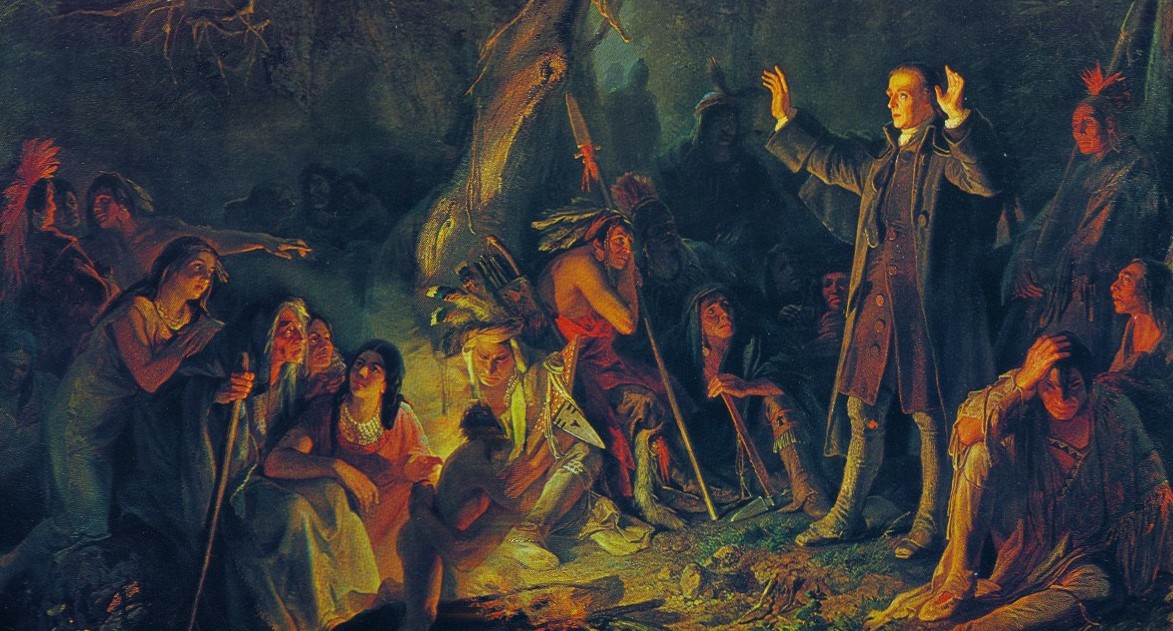
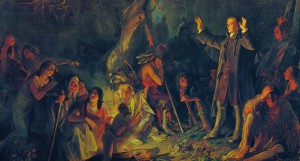
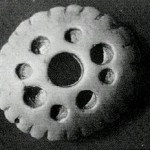
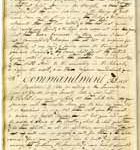
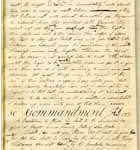
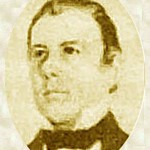



Is there a chance you know the artist and title of the painting at the top? I’ve never seen it before!
Dang it. I don’t know.